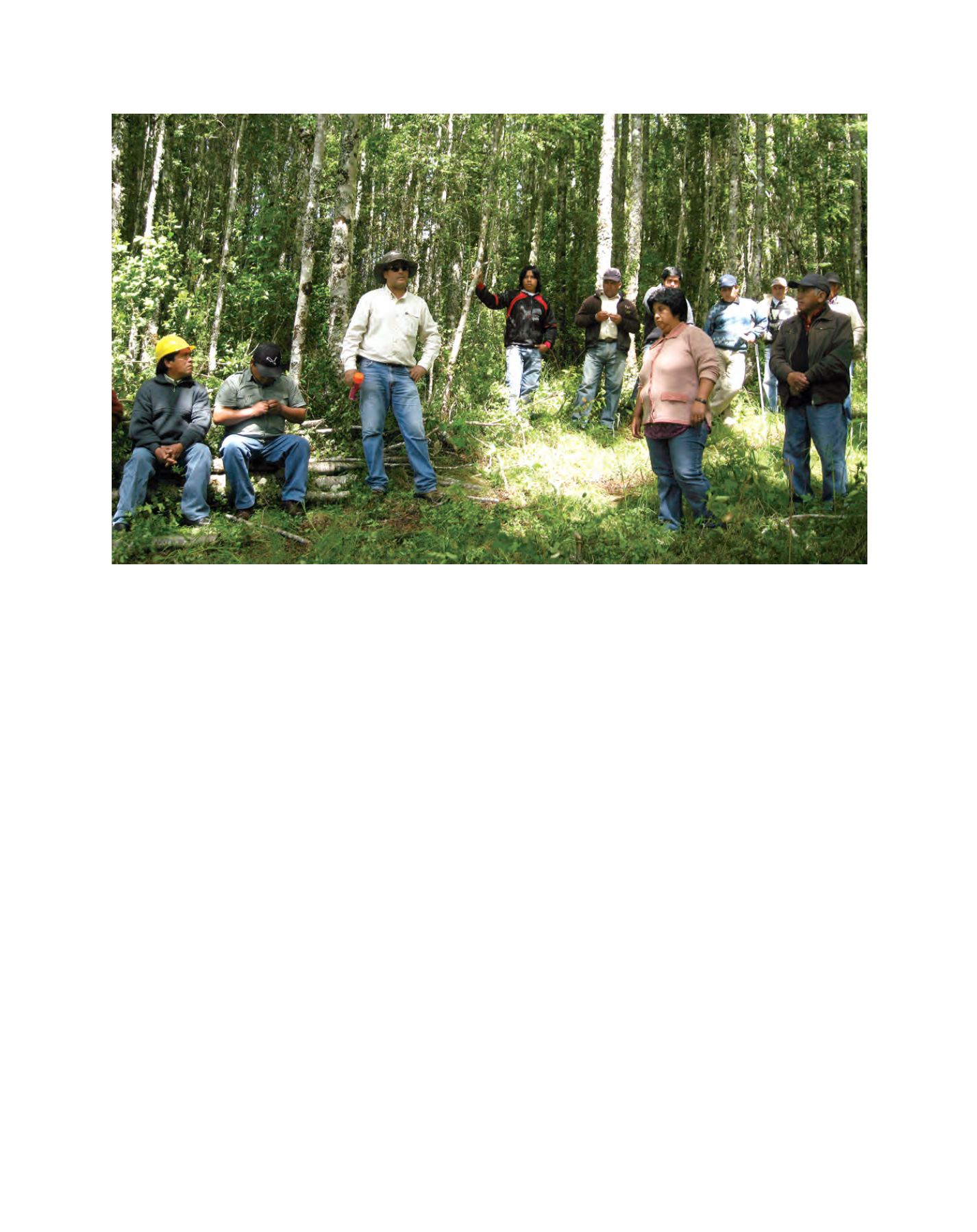

[
] 241
7,500 families having been favoured. Phase II of the programme,
which began in 2008 and ended in 2010, was aimed at increasing
the number of indigenous communities benefiting from forest
development and management of natural resources, furthering
their cultural identity and cooperating with the progress of public
policy in matters affecting those communities.
Considered to be equally important is the application of the
Mapuche Intercultural Forestry Model (MOFIM) and of the
Andean Environmental Intercultural Model (MAIA). Also, by
means of this same programme, CONAF furthers the ‘Recovery
of an eco-cultural medicinal dimension’ project with two indig-
enous communities in the communal district of Tirúa, in the
Araucanía Region.
In 2009, the ‘Management of Natural Resources with Indigenous
Communities’ (PROMACIN) project was discontinued. Launched
in 2003 and executed by CONAF, this project has enabled the
performance of actions aimed at financing the recovery of degraded
soils by means of the planting of 1,000 hectares with native and
exotic species, investments in the recovery of native forests and
recuperation of spaces, where 24 ‘Machis’ (Mapuche herbal
medicine-women) obtain their medicinal herbs. This is a reflec-
tion of the fact that CONAF understands its relationship with the
Mapuche peoples through a fundamental factor: the native forest.
Within the cultural identity line of CONAF’s Andean Environmental
Intercultural Model (MAIA), a project has been carried out since 2008
with the Ayquina-Turi Atacameño Indigenous Community in the
city of Calama, in the Antofagasta Region. The objective has been
to support the restoration, conservation and use of the ecocultural
spaces of the aforementioned community, by means of a combination
of ancestral indigenous knowledge with the non-indigenous technical
vision for the purpose of recovery, sustainable use and
management of natural resources.
In the communal district of Ranco, in the Los
Ríos Region, a project known as the ‘Recovery of the
Mapuche and Huilliche ceremonial and herbalist spaces
in Lago Ranco’ is under way. This project is carried
out by the council of ‘Médicas’ – Mapuche medicine-
women grouped together for the purpose of reinforcing
Mapuche medicine – with CONAF’s support, inas-
much as one of their main concerns is the loss of native
medicinal flora.
Model Forests
In Chile, great importance has been given to Model
Forests, of which at present there are four units,
namely Cachapoal, Araucarias de Alto Malleco,
Chiloé and Panguipulli. The work in these areas has
been mainly along the lines of strategic planning and
participative management.
This project, known as ‘Establishment of forest plan-
tations for the recovery of degraded soils, by means of
silvo-pastoral use, in small and medium-sized properties
in the communal district of Lonquimay’, is a collabo-
ration between the local community and the National
Farming and Animal Husbandry Development Institute
(INDAP), its purpose being to carry out income-
producing activities that can enhance the quality of
the environment but will enable owners to preserve
the natural resources related to the forests, such as the
water, the air, the flora and the fauna.
Training of indigenous communities and small-scale foresters
Image: CONAF
















